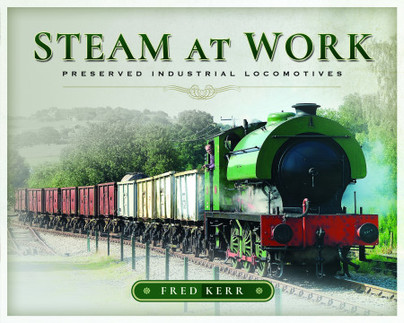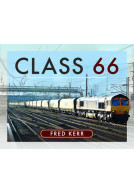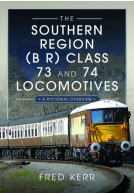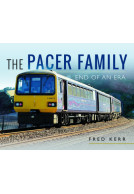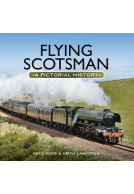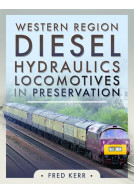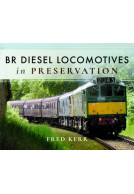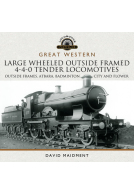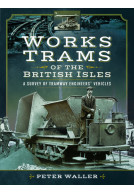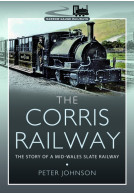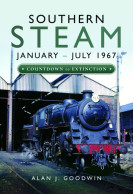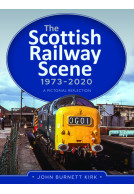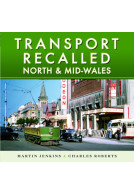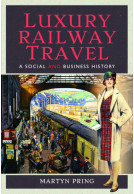Steam at Work (ePub)
Preserved Industrial Locomotives
Imprint: Pen & Sword Transport
File Size: 26.4 MB (.epub)
Pages: 128
ISBN: 9781473896598
Published: 12th July 2017
| Other formats available - Buy the Hardback and get the eBook for free! | Price |
|---|---|
| Steam at Work Hardback Add to Basket | £13.99 |
The author, Fred Kerr, was introduced to the world of industrial railways in 1956 when his parents moved from Edinburgh to Corby in Northamptonshire, where the local steelworks offered a mix of locomotives from several manufacturers. When steam traction finished on BR in August 1968, Fred's interest in railways continued with diesel and electric traction, whilst retaining a passing interest in industrial locomotives through his visits to the heritage lines which were initiated in the post-Beeching era.
When the author converted to digital photography in 2001, he visited many heritage lines as he sought to gain experience in the digital world. When he looked back after a decade of digital photography, he noted that industrial locomotives were still at work on many heritage lines throughout the UK. He also noted that during the 1960s the effort to preserve main-line steam traction had overlooked the availability of industrial locomotives, leading to the scrapping of many locomotives with both a story to tell and an incomplete working life.
The result is a book that pays tribute to industrial locomotives which are still at work by detailing the manufacturers of these work-horses and the locomotives which they built; identifying their working lives where possible; showing their entry into preservation and paying tribute to those heritage lines which appreciated the value of these unsung heroes of the Industrial Revolution by buying the 'scrap' locomotives then restoring them to working order.
A pleasure to examine, thoroughly recommended to anyone with an interest in industrial steam locomotives.
Railway Correspondence and Travel Society
If you enjoy railway books with quality pictures this could be one for you, the pictures are excellent.
York Model Engineer September 2017
Some people are fascinated by passenger steam trains, but there is another world of steam railways, that of freight. Fred Kerr's amazing memoir showcases some of the most iconic and finest of their time. One wonders if doing away with steam was the best thing when looking through these amazing pictures.
Books Monthly
Read the complete review here.
Fred Kerr was introduced to the world of industrial railways in 1956 when his parents moved from Edinburgh to Corby in Northamptonshire, where the local steelworks offered a mix of locomotives from several manufacturers. When steam traction finished on BR in August 1968, Fred's interest in railways continued with diesel and electric traction, whilst retaining a passing interest in industrial locomotives through his visits to the heritage lines which were initiated in the post-Beeching era. When Fred converted to digital photography in 2001, he visited many heritage lines as he sought to gain experience in the digital world. When he looked back after a decade of digital photography, he noted that industrial locomotives were still at work on many heritage lines throughout the UK. He also noted that during the 1960s the effort to preserve mainline steam traction had overlooked the availability of industrial locomotives, leading to the scrapping of many locomotives with both a story to tell and an incomplete working life. The result is "Steam at Work: Preserved Industrial Locomotives " is a beautifully and profusely illustrated compendium that pays tribute to industrial locomotives which are still at work by detailing the manufacturers of these workhorses and the locomotives which they built; identifying their working lives where possible; showing their entry into preservation and paying tribute to those heritage lines which appreciated the value of these unsung heroes of the Industrial Revolution by buying the 'scrap' locomotives then restoring and preserving them for the benefit of future generations. A unique and highly recommended addition to both community and academic library History of Railroading collections and supplemental studies lists, it should be noted for the personal reading lists of dedicated railroading buffs that "Steam at Work: Preserved Industrial Locomotives" is also available in a digital book format.
Midwest Book Review
I love it. A book to enjoy beautiful and detailed images through a current visual documentation.
José Manuél Rico Cortés (Mister JM) - Miniaturas JM
Read the complete Spanish review here.
This volume is of the ‘Picture book’ genre. As such it is beautiful, with the photographs being of frame-able quality...
NZ Crown Mines
Because of the quality of the images, it is possible that this book may have a wider appeal beyond the railway world; perhaps to readers who simply like quality images of small steam locomotives; or want something to share with children who are fans of Thomas the Tank Engine. It is also likely to appeal to ‘generalist’ railway enthusiasts, although those with a specific interest in preserved British industrial steam locomotives in contemporary settings are likely to find it a delight. Railway modellers with a specific interest in the subject may also find it of use.
About Fred Kerr
Fred Kerr is a photographer whose lifelong interest in railways began in Edinburgh during the early 1950s and has continued throughout his life since. His family move to Northamptonshire in 1956 introduced him to the Midland Main Line where the transition from steam to diesel traction became important as Derby Works reflected the change with new locomotives being tested and introduced to service. His early ventures into photography began in 1961 but became established during his University years in the early 1970s. Taking early retirement in 1994 he has spent time working for Colin Garratt, a muse whose inspiration provided opportunities to photograph railway scenes that have proved to be historic as the railway undergoes changes in both its structures and operations.







